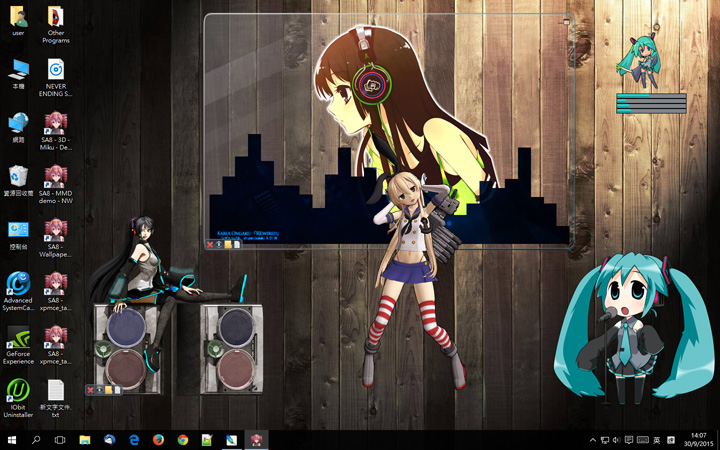
SystemAnimatorOnline
XR Animator, AI-based Full Body Motion Capture and Extended Reality (XR) solution, powered by System Animator Online
Stars: 1285
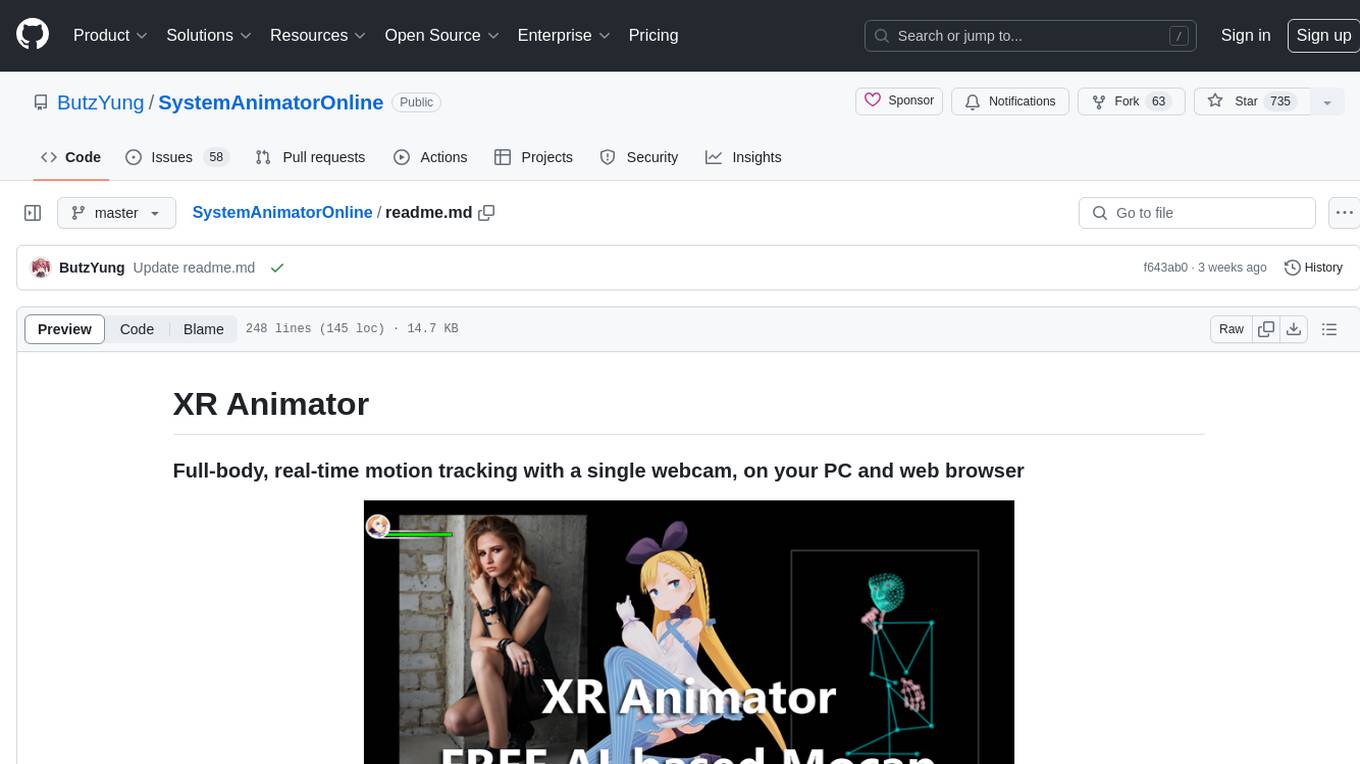
XR Animator is a video/webcam-based AI motion capture application designed for VTubing and the metaverse era. It uses machine learning solutions to detect 3D poses from a live webcam video, driving a 3D avatar as if controlled by the user's body. It supports full-body AI motion tracking, face tracking, and various XR/3D purposes. The tool can be used for VTubing, recording mocap motion, exporting motions to different formats, customizing backgrounds and scenes, and animating 3D models in other applications. It also supports AR on Android Chrome browser, AR selfie feature, and has relatively low system requirements for wide device compatibility.
README:
XR Animator, inherited from my previous desktop gadget project known as System Animator, is a video/webcam-based AI motion capture application designed for VTubing and the metaverse era. It uses the machine learning (ML) solution from MediaPipe and TensorFlow.js to detect the 3D poses from a live webcam video, which is then used to drive the 3D avatar (MMD/VRM model) as if you are controlling it with your body. It can be used for VTubing and various XR/3D purposes.
It has a variety of motion tracking options. You can choose to track the face, full body, or something in between (any combination of face/body/hands).
The web app version works on all major web browsers both on desktop and smartphone. On browsers supporting both web worker and OffscreenCanvas (e.g. Chrome), it can achieve 60fps visual rendering and 30fps body pose detection on a mediocre PC. On smartphones with limited processing power, you may want to use limit its usage on face tracking.
The Windows/Linux/macOS app version (powered by Electron) is also availabe for download, which provides a few extra features (e.g. VMC-protocol, transparent background) available only in a native-OS environment.
-
Support full-body AI motion tracking using a single webcam or media file (image/video)
-
Support "Perfect Sync"/ARKit-compatible 52 blendshapes for realistic face tracking
-
Support using any MMD/VRM model as your 3D avatar
-
Record mocap motion and export it to VMD/BVH/glTF motion format
-
Support loading VMD/FBX/BVH format 3D motions
-
Export FBX/BVH motions to VMD format
-
Support VMC-protocol to animate a 3D model elsewhere in other VMC-enabled applications such as VSeeFace, VNyan and Warudo (Electron mode only)
-
Customize the background and 3D scene with 2D image/video, 3D panorama and 3D objects (.x/.glb format)
-
Support 2D image as 3D backdrop by assigning an auto AI-generated depth map (video demo), as well as optionally running independently on Windows background (Electron mode) as 3D wallpaper gadget, and web app mode as a "2D-to-3D image viewer"
-
Support webcam object tracking, mapping tracked IRL objects to 3D props (video demo)
-
Support frameless window with transparent background on video capture apps such as OBS (Electron mode only)
-
Support AR (Augmented Reality) on Android Chrome browser
Check out these video demos and tutorials and watch XR Animator in action!
XR Animator has relatively low system requirements, making it usable on a wide range of devices, including laptops and even smartphones. On an entry-level PC with GTX1650-class GPU running XR Animator with full body mocap, you can expect 20+ fps on pose/fingers tracking, 40+ fps (capped at 30) on face tracking, and 60fps on 3D rendering.
However, if you are using a laptop but you are experiencing lower-than-expected frame rate, the app may be using the slower integrated GPU. This is a pretty common problem for laptop users. Configure your graphics card settings and make sure that the faster dedicated GPU is used. Check out the article below if you don't know how.
How to Force Windows to Use Dedicated Graphics
XR Animator and some other demos of System Animator Online support the "Augmented Reality" (AR) mode on mobile phones, which renders the 3D models that appear as if they exist in the real world. The AR mode requires mobile phones that support Google's ARCore technology, Chrome browser and the new WebXR API. Follow the steps below.
-
Check here for a list of ARCore-supported devices and see if your device is supported.
-
Install Google Play Services for AR (ARCore) on Google Play.
-
Install Chrome browser for Android.
Are you ready for the AR experience? Check out the online version of XR Animator on your Android Chrome browser!
After the page has been fully loaded, click on the little phone button on the top-left (or bottom-left) menu to activate the AR mode. Once the AR mode is enabled, you will see what your phone's camera is showing. Move your camera around the ground where you want to place the 3D model, and a white circle should apppear. Double-tap on the screen, and the 3D model will be placed over the white circle. Double-tab again to re-summon the white circle if you want to place the model elsewhere.
Check out these YouTube videos for demonstration.
The future of XR Animator relies on your support🙇 Some IRL family issues have significantly increased my financial burden. While it was fun to develop the app, financial return was next to minimal. Reality forces me to evaluate the sustainability of this project, or soon I will have to give up...😢
If you like XR Animator, please consider making a donation🙇 Or even better, join my membership with perks such as EARLY ACCESS to the latest version XR Animator (at least 5 months ahead of the public release on GitHub), insider stories/tips and other benefits🎁 Sponsor us, and help keep this project free and sustainable🙏
XR Animator is currently sponsored by the following people❤️
- NewruGuru, Kai, Nymph, KuraiNoOni, LouLi Lou, coffee-addict, skeh, Swoonifer, Nyaarium, The Infamous Moistener, Kyonko_VT, CoCoNo, Motoko Library
- Other supporters
System Animator was originally a desktop gadget project, born more than 10 years ago. The latest version, System Animator Online, is a major version advancement with focus on working as a web app instead of being just a desktop gadget. It fully supports MikuMikuDance (MMD) models and motions, as well as the latest VRM models and FBX/BVH motions, to create an immersive 3D environment.
It's hard to describe what System Animator Online can do in a few words. From a simple animated CPU meter to an interactive 3D music visualizer, a simple AR gadget on your phone to a full-body motion tracking app on your PC, the possibility is endless.
For more information about the desktop gadget version of System Animator, please visit the following page. https://www.animetheme.com/sidebar/
System Animator was born more than 10 years ago as a personal and tiny 100-line-ish JavaScript desktop gadget project for Windows Vista which shows an animated rocket Anime girl as a CPU meter (the animation is still in XR Animator).
As time goes by, I decided to add more features, multi-purpose system meter, music visualizer, 3D/MMD support, animated wallpaper engine, RPG engine and eventually what you see in XR Animator. The codebase has grown exponentially while the core is still an Internet-Explorer-based JavaScript gadget, and things were becoming more and more clumsy, to a point when I had to decide whether to rewrite everything from scratch to match the modern coding standard (open source, module based, etc). However, I gave up and decided to carry on with what I have written, as a total restart would require too much time and efforts, probably not worthy as a personal project. Besides, as the rule of programming says, "If it works, don't touch it" LOL
Eventually, I decided to put the project on Github for my own convenience, but technically speaking you can consider it open source, though I have to admit that some of the codes are outdated, clumsy and confusing. Everything is fine if you are just an end-user of XR Animator/System Animator as an app, but if you want to build your own things from my codes, be warned that they can be pretty incomprehensible LOL
-
3D Miku The Dancer (drop any MP3 and she will dance for you)
-
3D Multiplayer RPG (up to 3 players)
All demos support the use of custom MMD (MikuMikuDance) model. Drop a zip of your favorite MMD model at the beginning, press the START button, and the demo will proceed with your model instead of the default one.
- License (CC BY-NC-SA 4.0) - http://creativecommons.org/licenses/by-nc-sa/4.0/
- This license applies if you are adapting XR Animator's source code for your own purpose, such as building another software or service.
- This license does not cover any third-party assets which may have incompatible licenses of their own.
- This license does not apply to content generated from the functionality of XR Animator, such as video content generated from the motion capture feature of System Animator using your own assets. XR Animator claims no right or responsibility over such content.
-
System Animator © Butz Yung/Anime Theme - http://www.animetheme.com/sidebar/
-
jThree v2 (NOTE: jThree has been discontinued. Its successor is known as "Grimoire.js")
-
ammo.js, a port of Bullet Physics to JavaScript, zlib licensed
-
JSZip (used under MIT license)
-
"Appearance Miku" MMD Model - Readme/License
-
Some texture/image/icon sources https://3dtextures.me/ https://opengameart.org/content/rpg-inventory https://opengameart.org/content/fantasy-icon-pack-by-ravenmore-0 https://opengameart.org/content/potion-bottles https://www.flaticon.com/ https://www.iconfinder.com/ https://icon-icons.com/en/pack/Social-Distancing/2274 https://github.com/icons8/flat-color-icons https://www.behance.net/gallery/41818673/FREE-SPORT-ICONS
-
Simple Explosion by Bleed https://remusprites.carbonmade.com/ https://opengameart.org/content/simple-explosion-bleeds-game-art
-
Various 3D background effects ported and modified from codes found on Shadertoy
-
Some icons and backgrounds from Freepik
-
For some other third-party programming libraries/3D data/assets used in System Animator, please refer to the corresponding script/readme for license and terms (can be found on the downloadable/Github version of System Animator).
-
もぐ式りょう/りく/りょく/りん by Mogg https://3d.nicovideo.jp/works/td55798 https://3d.nicovideo.jp/works/td55973 https://3d.nicovideo.jp/works/td56074 https://3d.nicovideo.jp/works/td56604
-
"Stranger Things" - A Remix ft. Michael Jobity https://soundcloud.com/foreignmachine/stranger-remix
-
Dragon Ball Super I Ultra Instinct OST I Clash of Gods Remix I Hip Hop Instrumental I @AndrezoWorks https://www.youtube.com/watch?v=KJ71dY4mkNo
-
Credits are given to the authors of any other image/media files used in System Animator.
-
Twitter: https://twitter.com/butz_yung
-
Discord: https://discord.gg/Xs4YEMVtkx
-
Ko-fi: https://ko-fi.com/butzyung
-
FANBOX: https://xra.fanbox.cc/
-
Homepage (System Animator): https://www.animetheme.com/sidebar/
-
Email: [email protected]
For Tasks:
Click tags to check more tools for each tasksFor Jobs:
Alternative AI tools for SystemAnimatorOnline
Similar Open Source Tools

SystemAnimatorOnline
XR Animator is a video/webcam-based AI motion capture application designed for VTubing and the metaverse era. It uses machine learning solutions to detect 3D poses from a live webcam video, driving a 3D avatar as if controlled by the user's body. It supports full-body AI motion tracking, face tracking, and various XR/3D purposes. The tool can be used for VTubing, recording mocap motion, exporting motions to different formats, customizing backgrounds and scenes, and animating 3D models in other applications. It also supports AR on Android Chrome browser, AR selfie feature, and has relatively low system requirements for wide device compatibility.
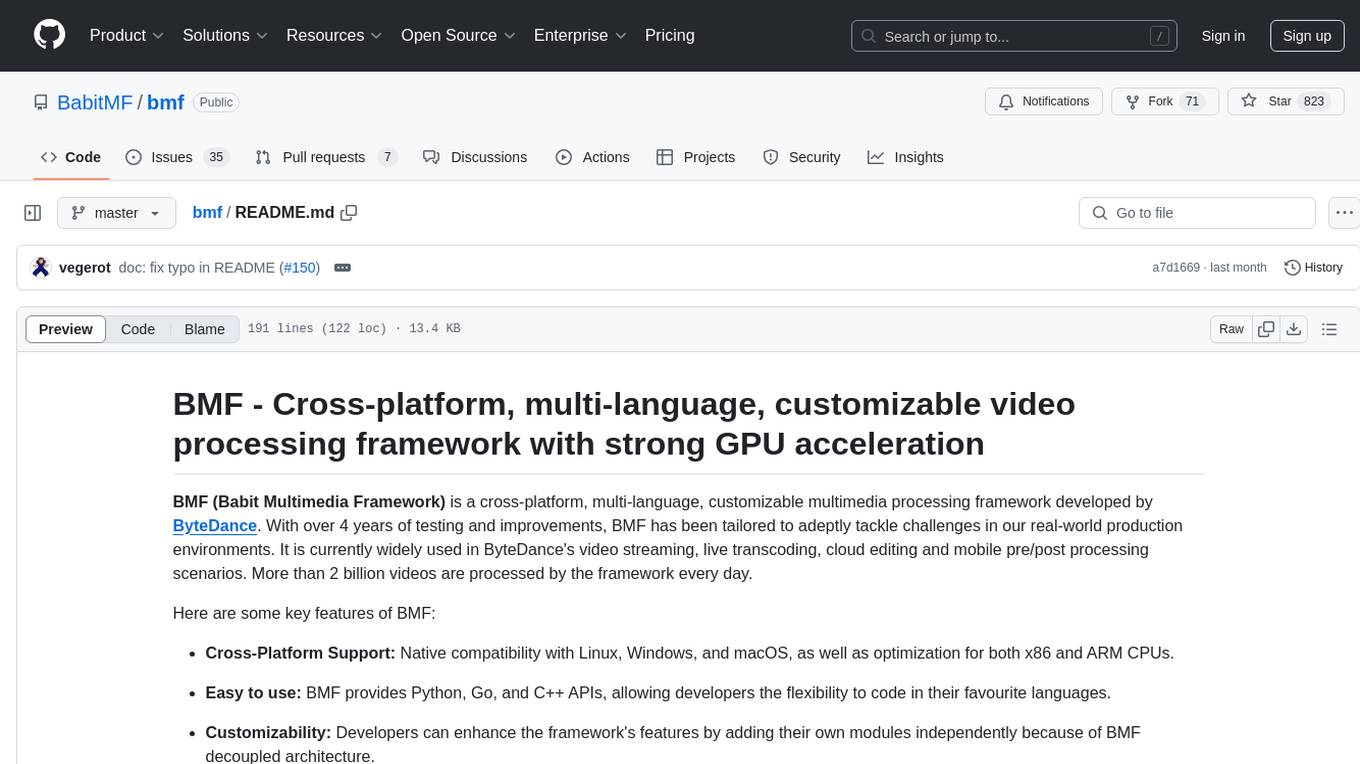
bmf
BMF (Babit Multimedia Framework) is a cross-platform, multi-language, customizable multimedia processing framework developed by ByteDance. It offers native compatibility with Linux, Windows, and macOS, Python, Go, and C++ APIs, and high performance with strong GPU acceleration. BMF allows developers to enhance its features independently and provides efficient data conversion across popular frameworks and hardware devices. BMFLite is a client-side lightweight framework used in apps like Douyin/Xigua, serving over one billion users daily. BMF is widely used in video streaming, live transcoding, cloud editing, and mobile pre/post processing scenarios.
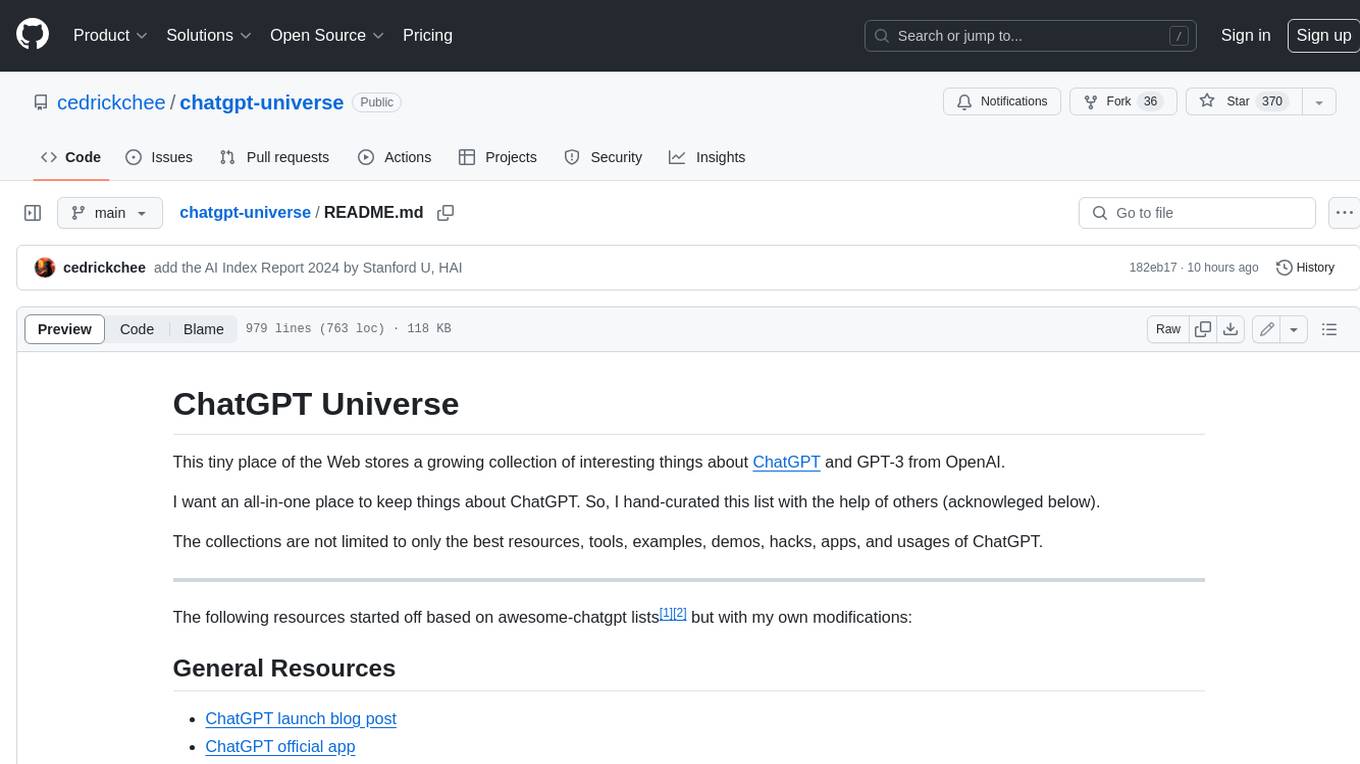
chatgpt-universe
ChatGPT is a large language model that can generate human-like text, translate languages, write different kinds of creative content, and answer your questions in a conversational way. It is trained on a massive amount of text data, and it is able to understand and respond to a wide range of natural language prompts. Here are 5 jobs suitable for this tool, in lowercase letters: 1. content writer 2. chatbot assistant 3. language translator 4. creative writer 5. researcher
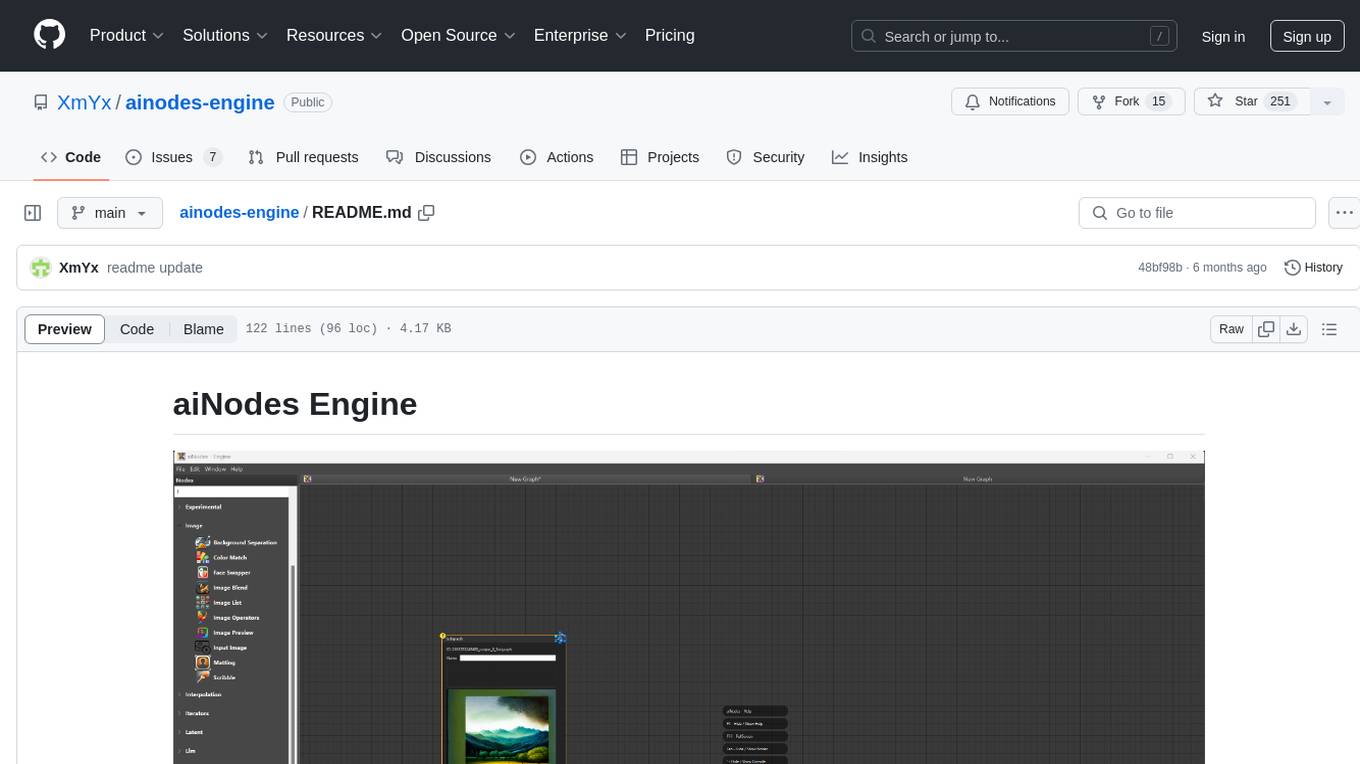
ainodes-engine
aiNodes Engine is a Python-based AI image/motion picture generator node engine with a live execution chain, python code editor node, and plug-in support. It offers full modularity, colored background drop, and easy node creation with IDE annotations. The project is officially supported by Deforum and incorporates various open-source projects like ComfyUI. It is designed to be flexible, with an Unreal-like execution chain, supporting features such as Deforum, Stable Diffusion, Upscalers, Kandinsky, ControlNet, and more. The engine allows for background separation, human matting/masking, compositing, drag and drop, subgraphs, and graph saving/loading from image metadata. It aims to provide a unique, controllable manner of working with a strict user-declared execution chain.
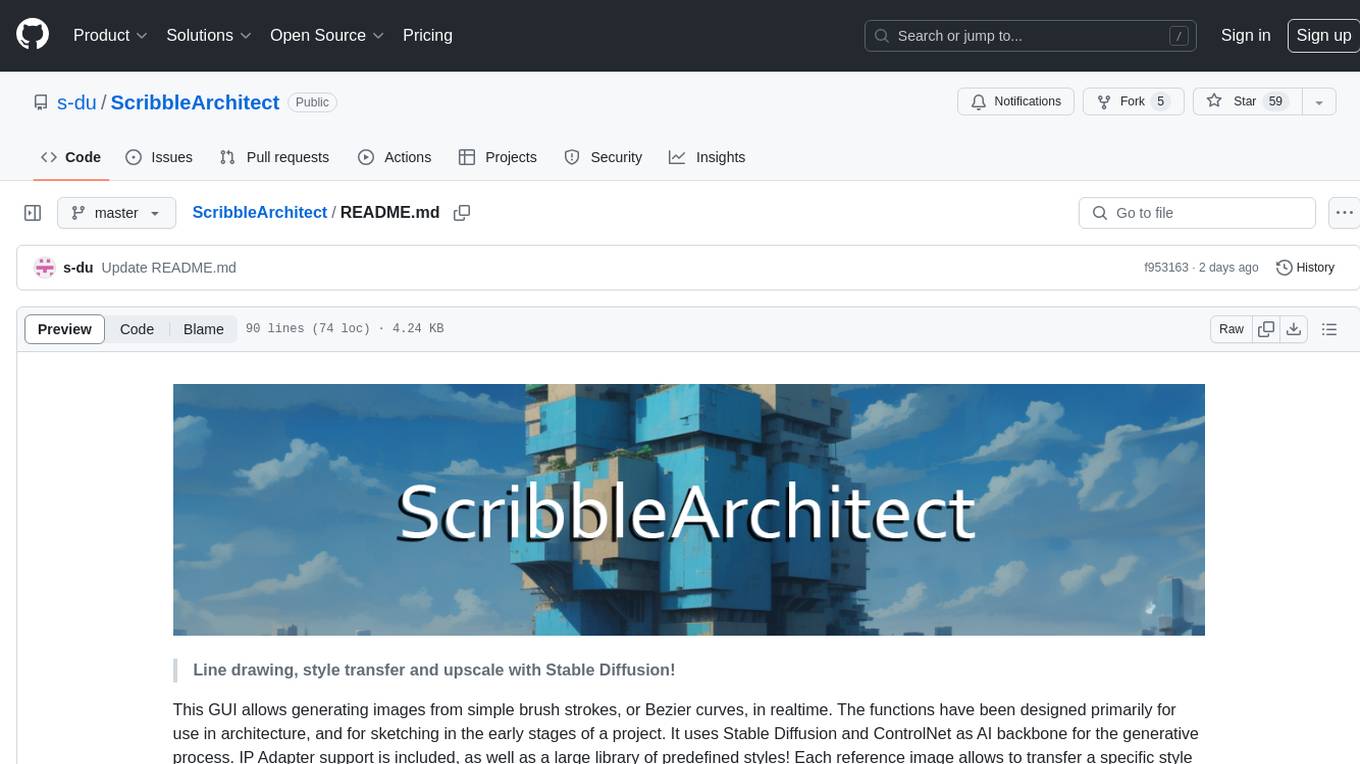
ScribbleArchitect
ScribbleArchitect is a GUI tool designed for generating images from simple brush strokes or Bezier curves in real-time. It is primarily intended for use in architecture and sketching in the early stages of a project. The tool utilizes Stable Diffusion and ControlNet as AI backbone for the generative process, with IP Adapter support and a library of predefined styles. Users can transfer specific styles to their line work, upscale images for high resolution export, and utilize a ControlNet upscaler. The tool also features a screen capture function for working with external tools like Adobe Illustrator or Inkscape.
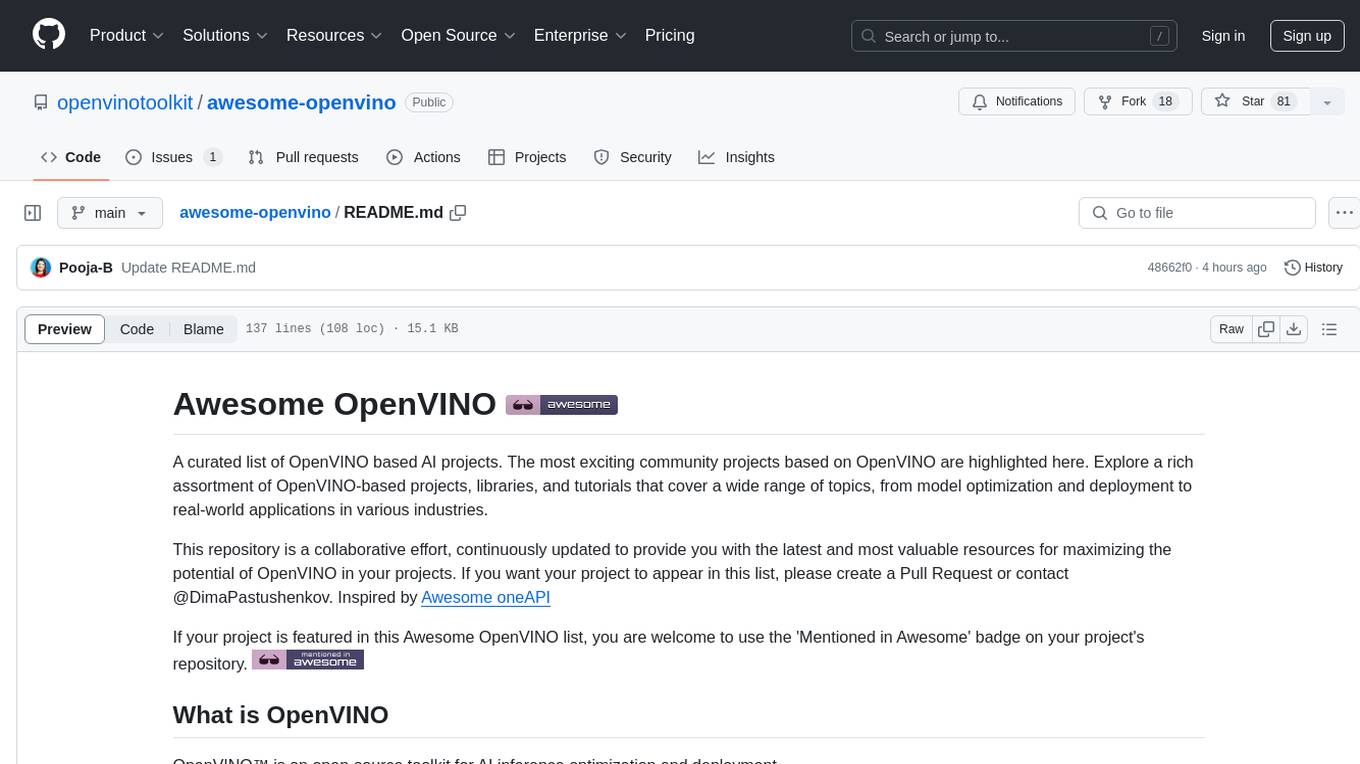
awesome-openvino
Awesome OpenVINO is a curated list of AI projects based on the OpenVINO toolkit, offering a rich assortment of projects, libraries, and tutorials covering various topics like model optimization, deployment, and real-world applications across industries. It serves as a valuable resource continuously updated to maximize the potential of OpenVINO in projects, featuring projects like Stable Diffusion web UI, Visioncom, FastSD CPU, OpenVINO AI Plugins for GIMP, and more.
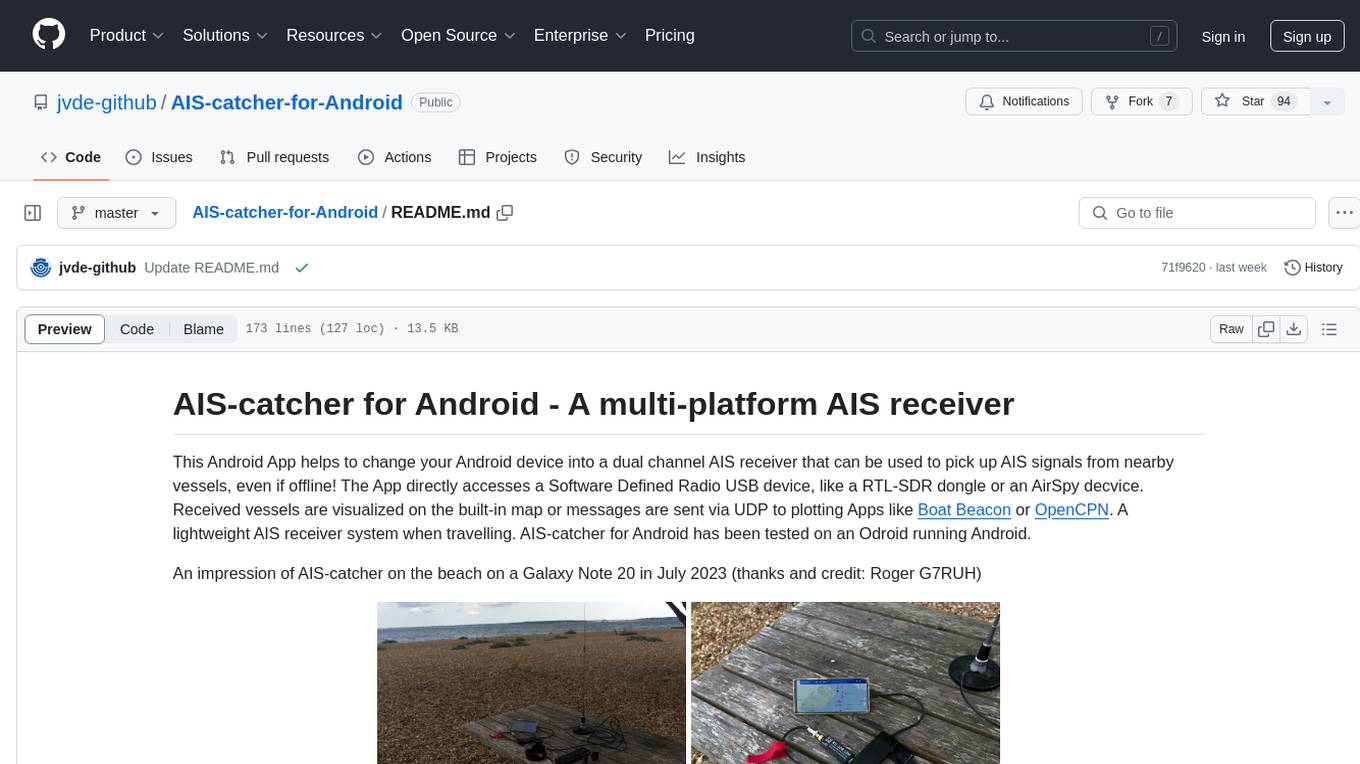
AIS-catcher-for-Android
AIS-catcher for Android is a multi-platform AIS receiver app that transforms your Android device into a dual channel AIS receiver. It directly accesses a Software Defined Radio USB device to pick up AIS signals from nearby vessels, visualizing them on a built-in map or sending messages via UDP to plotting apps. The app requires a RTL-SDR dongle or an AirSpy device, a simple antenna, an Android device with USB connector, and an OTG cable. It is designed for research and educational purposes under the GPL license, with no warranty. Users are responsible for prudent use and compliance with local regulations. The app is not intended for navigation or safety purposes.
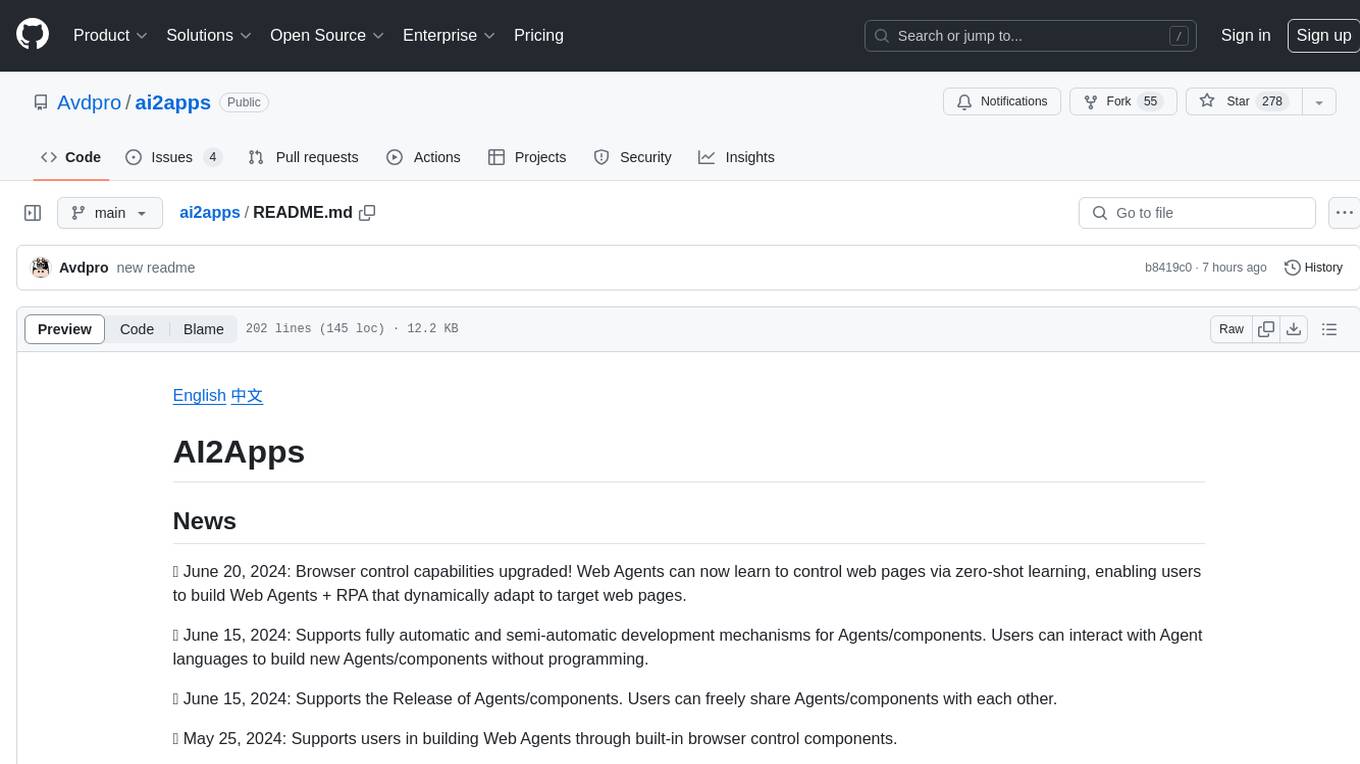
ai2apps
AI2Apps is a visual IDE for building LLM-based AI agent applications, enabling developers to efficiently create AI agents through drag-and-drop, with features like design-to-development for rapid prototyping, direct packaging of agents into apps, powerful debugging capabilities, enhanced user interaction, efficient team collaboration, flexible deployment, multilingual support, simplified product maintenance, and extensibility through plugins.
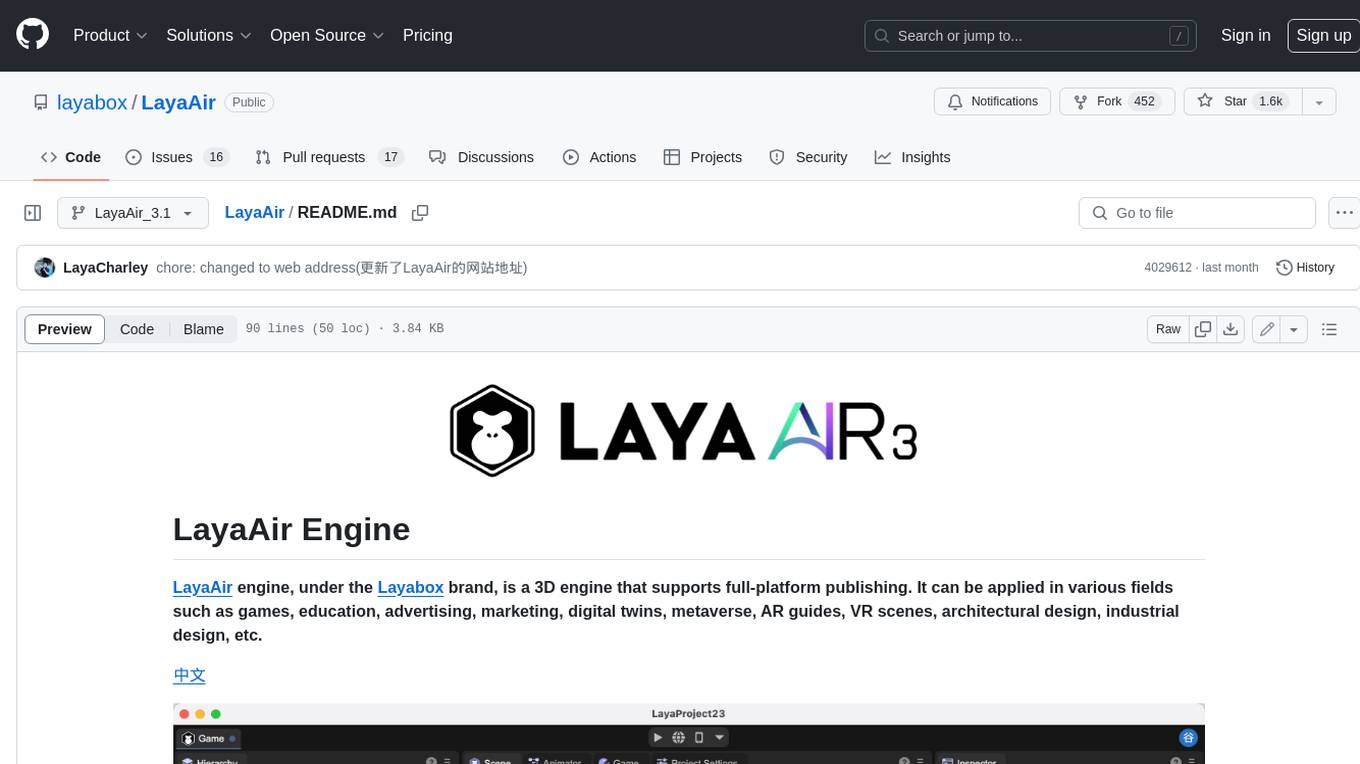
LayaAir
LayaAir engine, under the Layabox brand, is a 3D engine that supports full-platform publishing. It can be applied in various fields such as games, education, advertising, marketing, digital twins, metaverse, AR guides, VR scenes, architectural design, industrial design, etc.
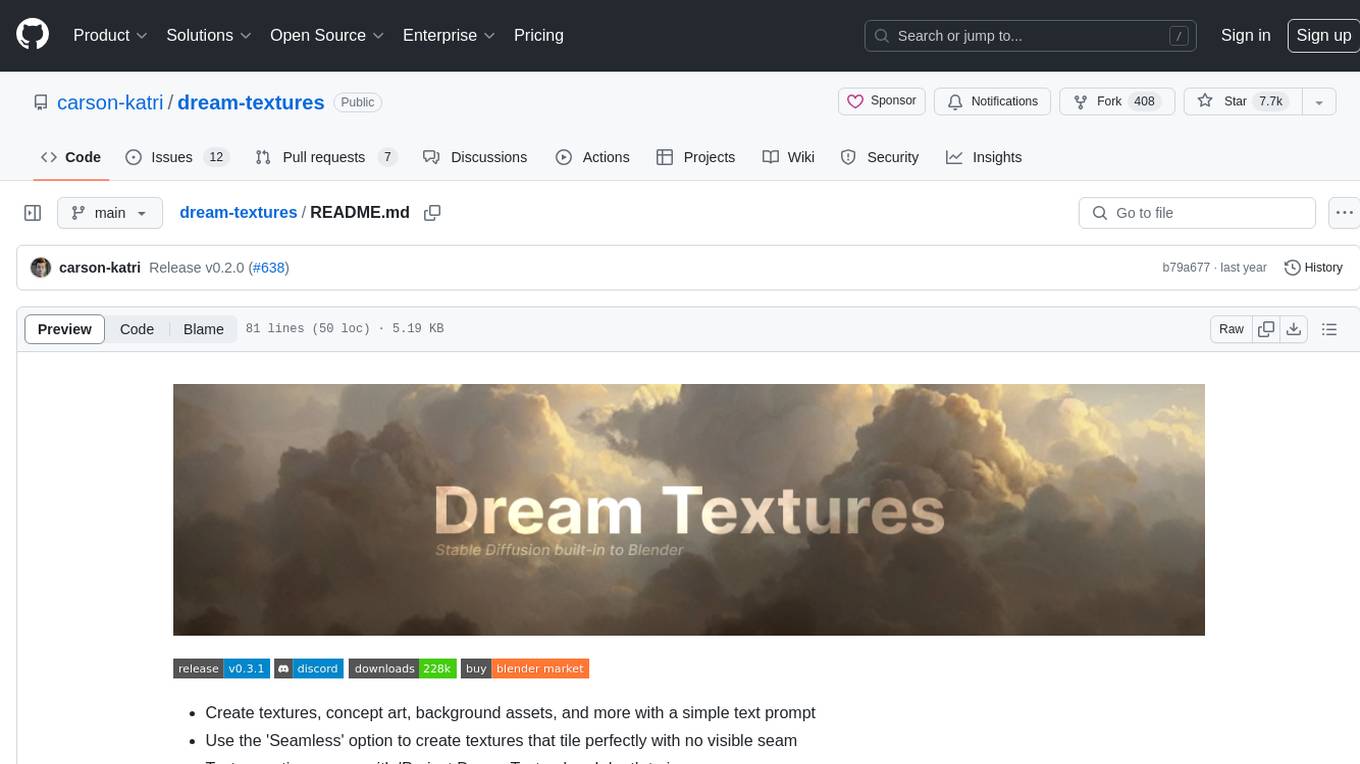
dream-textures
Dream Textures is a tool integrated into Blender that allows users to create textures, concept art, background assets, and more using simple text prompts. It offers features like seamless texture creation, texture projection for entire scenes, restyling animations, and running models on the user's machine for faster iteration. The tool supports CUDA and Apple Silicon GPUs, with over 4GB of VRAM recommended. Users can troubleshoot issues by checking Blender's system console or seeking help from the community on Discord.
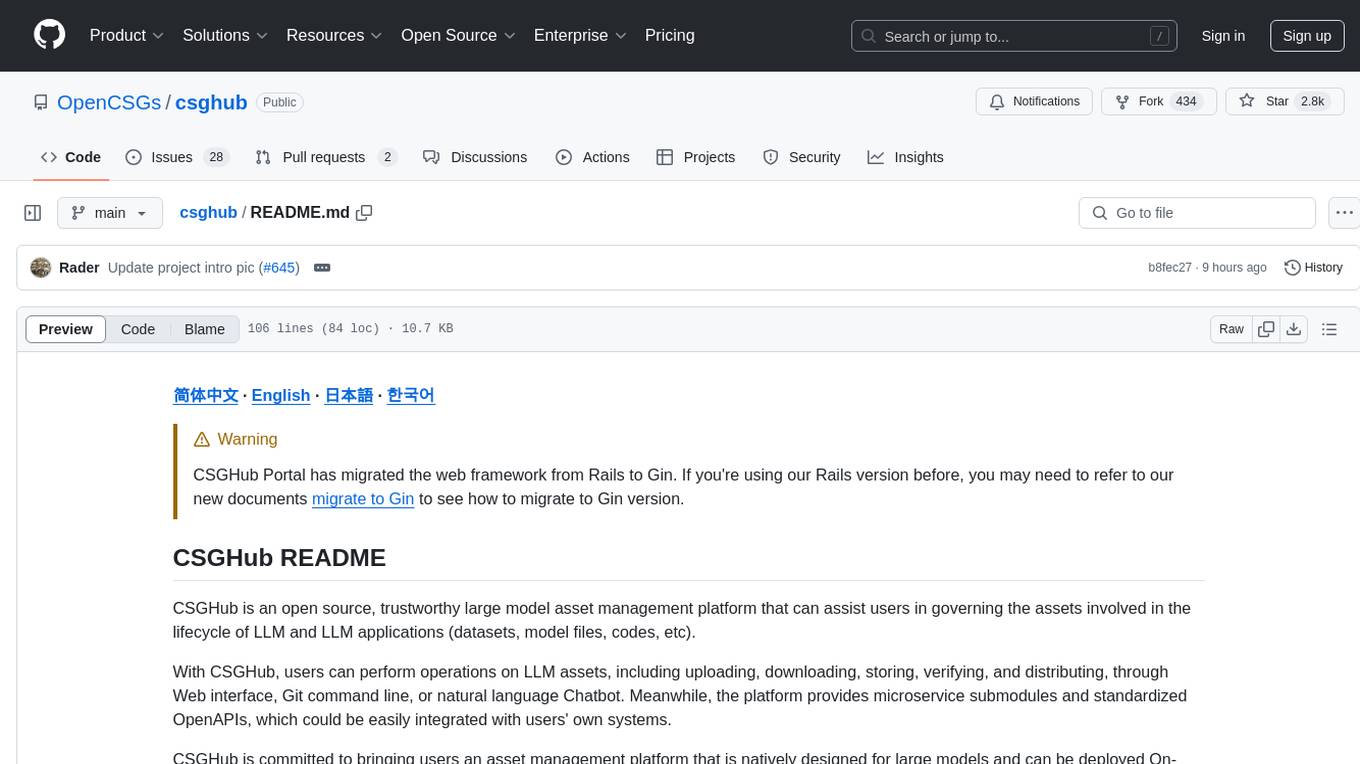
csghub
CSGHub is an open source platform for managing large model assets, including datasets, model files, and codes. It offers functionalities similar to a privatized Huggingface, managing assets in a manner akin to how OpenStack Glance manages virtual machine images. Users can perform operations such as uploading, downloading, storing, verifying, and distributing assets through various interfaces. The platform provides microservice submodules and standardized OpenAPIs for easy integration with users' systems. CSGHub is designed for large models and can be deployed On-Premise for offline operation.

llms-tools
The 'llms-tools' repository is a comprehensive collection of AI tools, open-source projects, and research related to Large Language Models (LLMs) and Chatbots. It covers a wide range of topics such as AI in various domains, open-source models, chats & assistants, visual language models, evaluation tools, libraries, devices, income models, text-to-image, computer vision, audio & speech, code & math, games, robotics, typography, bio & med, military, climate, finance, and presentation. The repository provides valuable resources for researchers, developers, and enthusiasts interested in exploring the capabilities of LLMs and related technologies.
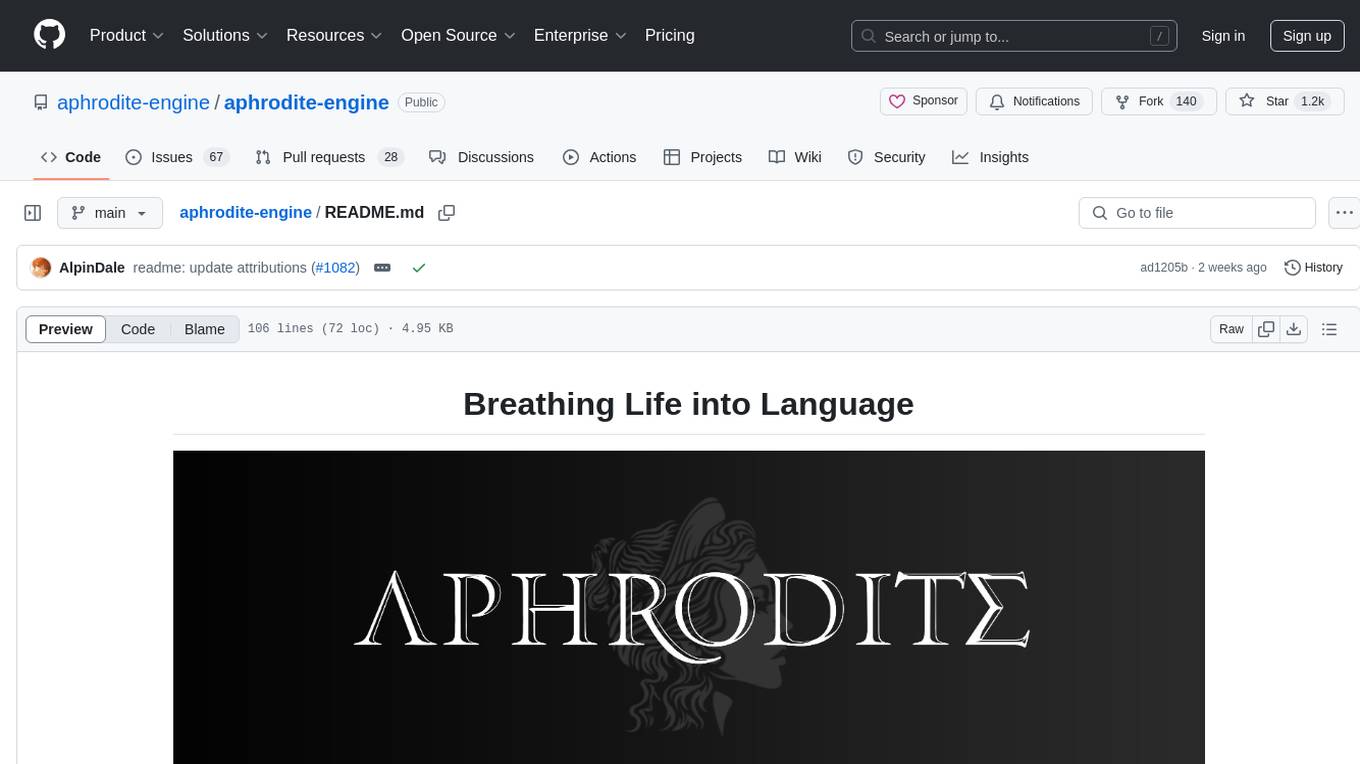
aphrodite-engine
Aphrodite is an inference engine optimized for serving HuggingFace-compatible models at scale. It leverages vLLM's Paged Attention technology to deliver high-performance model inference for multiple concurrent users. The engine supports continuous batching, efficient key/value management, optimized CUDA kernels, quantization support, distributed inference, and modern samplers. It can be easily installed and launched, with Docker support for deployment. Aphrodite requires Linux or Windows OS, Python 3.8 to 3.12, and CUDA >= 11. It is designed to utilize 90% of GPU VRAM but offers options to limit memory usage. Contributors are welcome to enhance the engine.
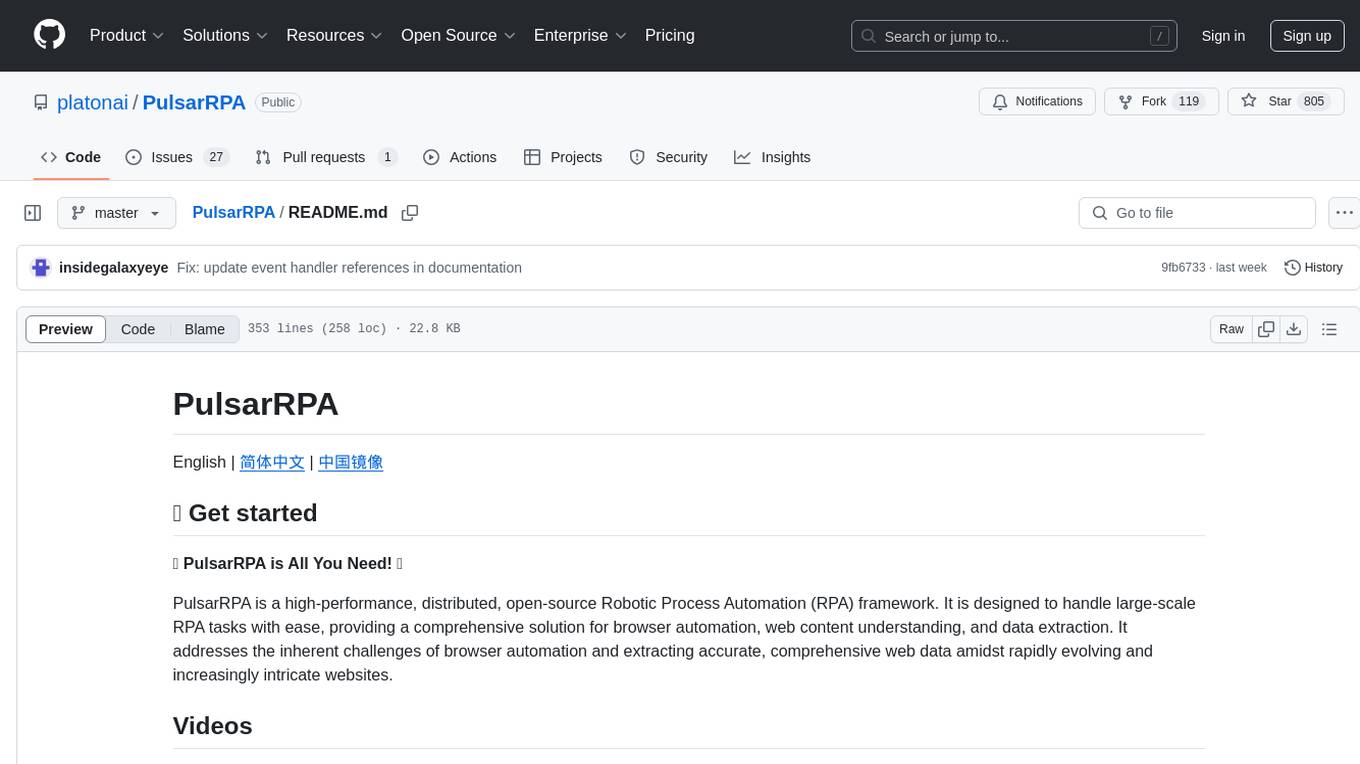
PulsarRPA
PulsarRPA is a high-performance, distributed, open-source Robotic Process Automation (RPA) framework designed to handle large-scale RPA tasks with ease. It provides a comprehensive solution for browser automation, web content understanding, and data extraction. PulsarRPA addresses challenges of browser automation and accurate web data extraction from complex and evolving websites. It incorporates innovative technologies like browser rendering, RPA, intelligent scraping, advanced DOM parsing, and distributed architecture to ensure efficient, accurate, and scalable web data extraction. The tool is open-source, customizable, and supports cutting-edge information extraction technology, making it a preferred solution for large-scale web data extraction.
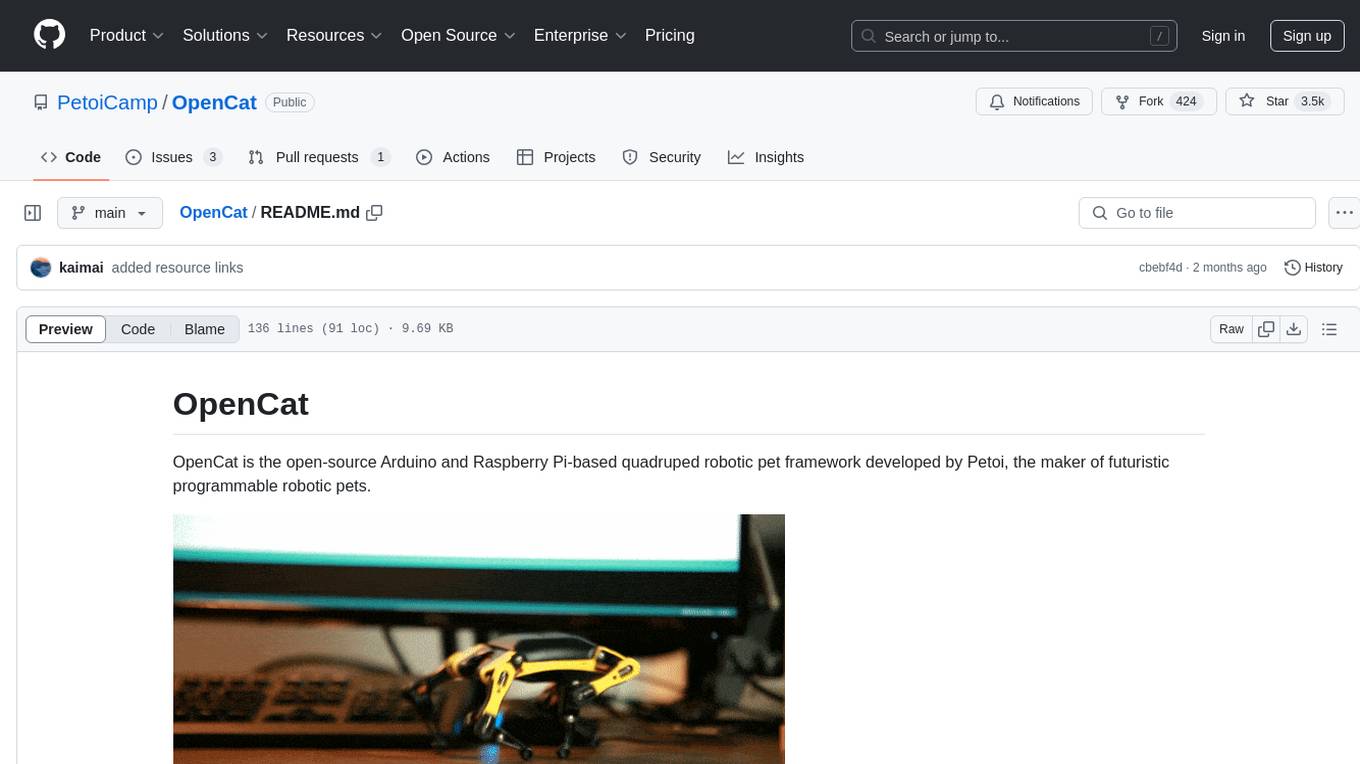
OpenCat
OpenCat is an open-source Arduino and Raspberry Pi-based quadruped robotic pet framework developed by Petoi. It aims to foster collaboration in quadruped robotics research, education, and engineering development of agile and affordable quadruped robot pets. The project provides a base open source platform for creating programmable gaits, locomotion, and deployment of inverse kinematics quadruped robots, enabling simulations to the real world via block-based coding/C/C++/Python programming languages. Users have deployed various robotics/AI/IoT applications and the project has successfully crowdfunded mini robot kits, shipped worldwide, and established a production line for affordable robotic kits and accessories.
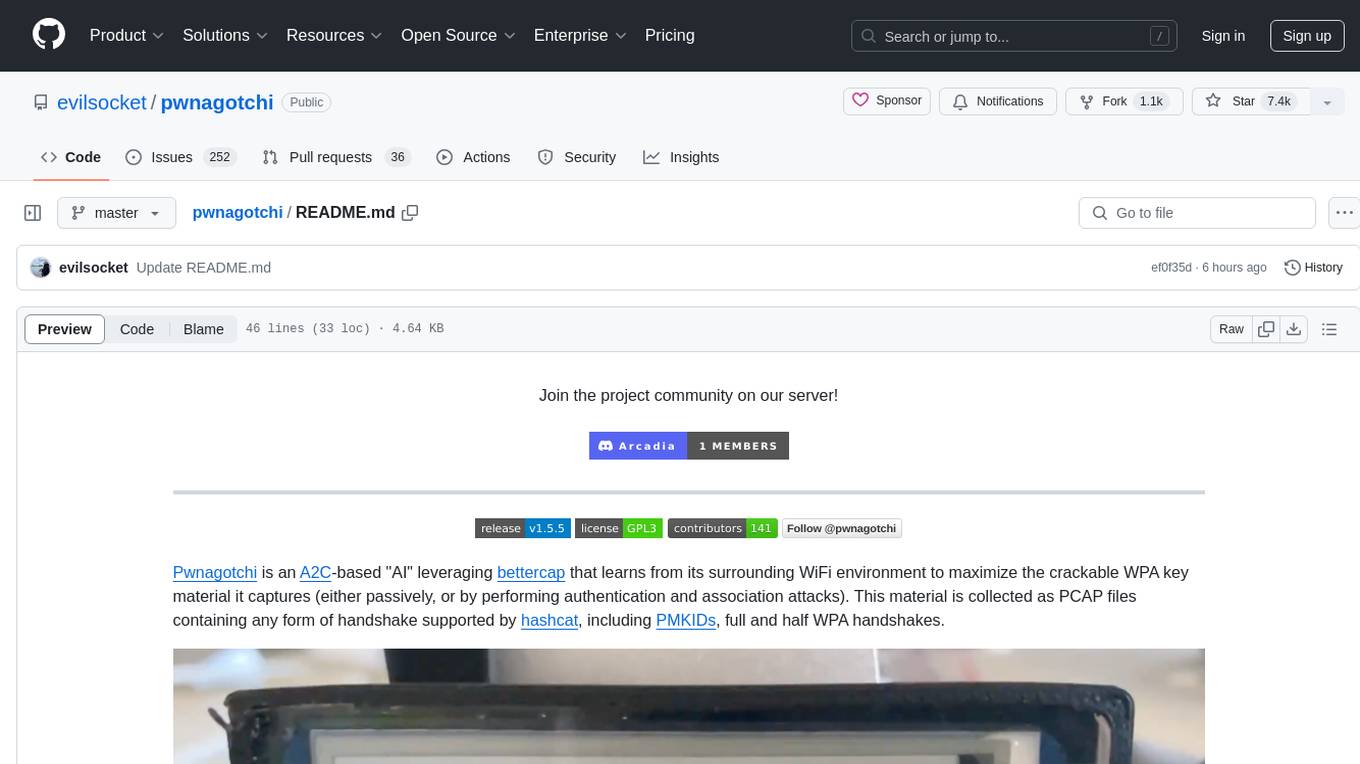
pwnagotchi
Pwnagotchi is an AI tool leveraging bettercap to learn from WiFi environments and maximize crackable WPA key material. It uses LSTM with MLP feature extractor for A2C agent, learning over epochs to improve performance in various WiFi environments. Units can cooperate using a custom parasite protocol. Visit https://www.pwnagotchi.ai for documentation and community links.
For similar tasks

SystemAnimatorOnline
XR Animator is a video/webcam-based AI motion capture application designed for VTubing and the metaverse era. It uses machine learning solutions to detect 3D poses from a live webcam video, driving a 3D avatar as if controlled by the user's body. It supports full-body AI motion tracking, face tracking, and various XR/3D purposes. The tool can be used for VTubing, recording mocap motion, exporting motions to different formats, customizing backgrounds and scenes, and animating 3D models in other applications. It also supports AR on Android Chrome browser, AR selfie feature, and has relatively low system requirements for wide device compatibility.

Open-LLM-VTuber-Web
Open LLM Vtuber is an Electron application built using React and TypeScript. It allows users to create virtual avatars for live streaming or video content creation. The application provides a user-friendly interface for customizing avatars and integrating them into various streaming platforms. With recommended IDE setup including VSCode, ESLint, and Prettier, users can easily develop and customize their virtual avatars. The project setup involves installation, development, and building for different operating systems such as Windows, macOS, and Linux.
For similar jobs

sweep
Sweep is an AI junior developer that turns bugs and feature requests into code changes. It automatically handles developer experience improvements like adding type hints and improving test coverage.

teams-ai
The Teams AI Library is a software development kit (SDK) that helps developers create bots that can interact with Teams and Microsoft 365 applications. It is built on top of the Bot Framework SDK and simplifies the process of developing bots that interact with Teams' artificial intelligence capabilities. The SDK is available for JavaScript/TypeScript, .NET, and Python.

ai-guide
This guide is dedicated to Large Language Models (LLMs) that you can run on your home computer. It assumes your PC is a lower-end, non-gaming setup.

classifai
Supercharge WordPress Content Workflows and Engagement with Artificial Intelligence. Tap into leading cloud-based services like OpenAI, Microsoft Azure AI, Google Gemini and IBM Watson to augment your WordPress-powered websites. Publish content faster while improving SEO performance and increasing audience engagement. ClassifAI integrates Artificial Intelligence and Machine Learning technologies to lighten your workload and eliminate tedious tasks, giving you more time to create original content that matters.

chatbot-ui
Chatbot UI is an open-source AI chat app that allows users to create and deploy their own AI chatbots. It is easy to use and can be customized to fit any need. Chatbot UI is perfect for businesses, developers, and anyone who wants to create a chatbot.

BricksLLM
BricksLLM is a cloud native AI gateway written in Go. Currently, it provides native support for OpenAI, Anthropic, Azure OpenAI and vLLM. BricksLLM aims to provide enterprise level infrastructure that can power any LLM production use cases. Here are some use cases for BricksLLM: * Set LLM usage limits for users on different pricing tiers * Track LLM usage on a per user and per organization basis * Block or redact requests containing PIIs * Improve LLM reliability with failovers, retries and caching * Distribute API keys with rate limits and cost limits for internal development/production use cases * Distribute API keys with rate limits and cost limits for students

uAgents
uAgents is a Python library developed by Fetch.ai that allows for the creation of autonomous AI agents. These agents can perform various tasks on a schedule or take action on various events. uAgents are easy to create and manage, and they are connected to a fast-growing network of other uAgents. They are also secure, with cryptographically secured messages and wallets.

griptape
Griptape is a modular Python framework for building AI-powered applications that securely connect to your enterprise data and APIs. It offers developers the ability to maintain control and flexibility at every step. Griptape's core components include Structures (Agents, Pipelines, and Workflows), Tasks, Tools, Memory (Conversation Memory, Task Memory, and Meta Memory), Drivers (Prompt and Embedding Drivers, Vector Store Drivers, Image Generation Drivers, Image Query Drivers, SQL Drivers, Web Scraper Drivers, and Conversation Memory Drivers), Engines (Query Engines, Extraction Engines, Summary Engines, Image Generation Engines, and Image Query Engines), and additional components (Rulesets, Loaders, Artifacts, Chunkers, and Tokenizers). Griptape enables developers to create AI-powered applications with ease and efficiency.


